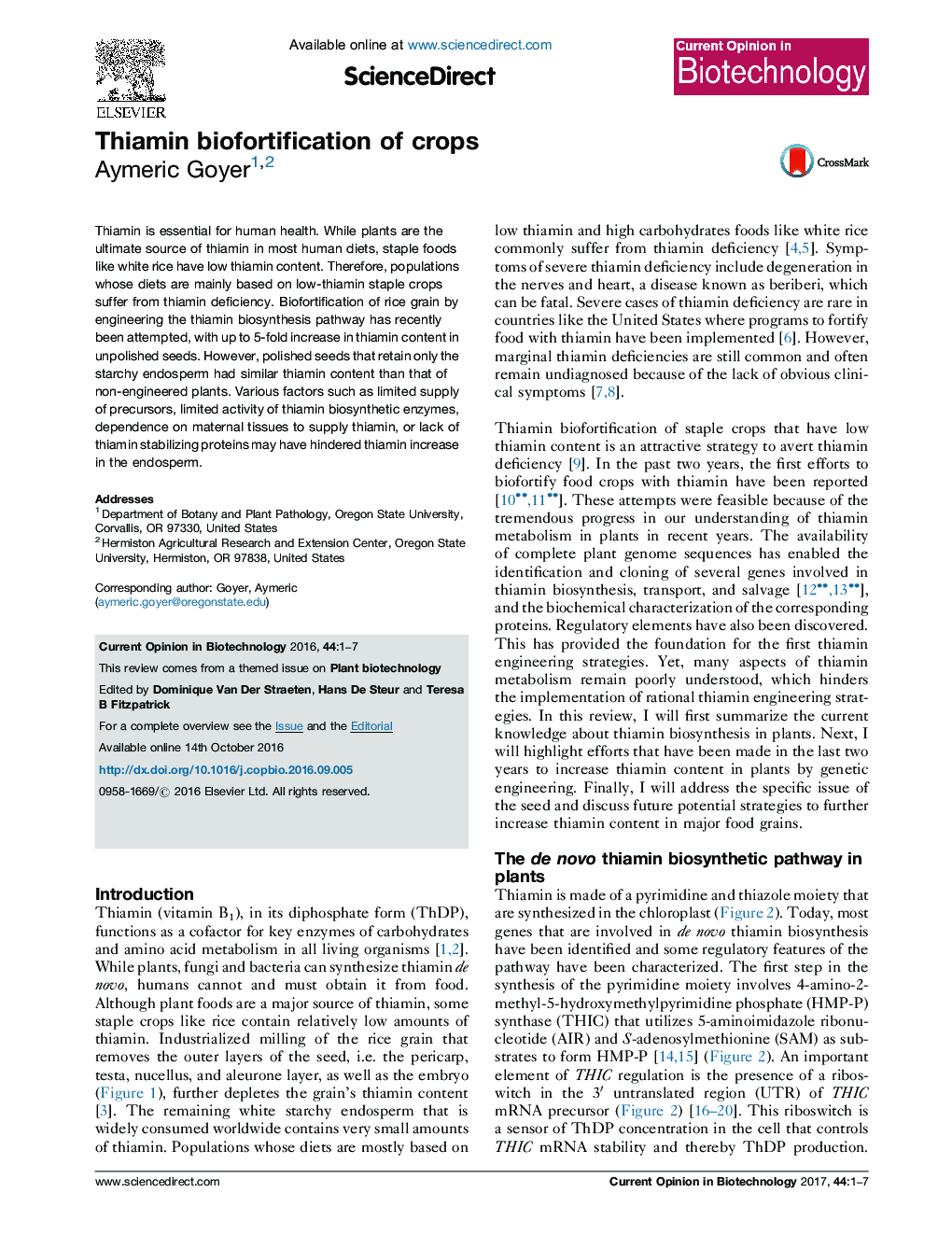| Article ID | Journal | Published Year | Pages | File Type |
|---|---|---|---|---|
| 6451561 | Current Opinion in Biotechnology | 2017 | 7 Pages |
•Thiamin deficiency is common worldwide.•Populations that mostly rely on white rice consumption are the most affected.•The rice endosperm, also called white rice, is a very poor source of thiamin.•Engineering of the thiamin biosynthesis pathway has so far led to mixed results.•New engineering strategies are required to develop high thiamin rice grain.
Thiamin is essential for human health. While plants are the ultimate source of thiamin in most human diets, staple foods like white rice have low thiamin content. Therefore, populations whose diets are mainly based on low-thiamin staple crops suffer from thiamin deficiency. Biofortification of rice grain by engineering the thiamin biosynthesis pathway has recently been attempted, with up to 5-fold increase in thiamin content in unpolished seeds. However, polished seeds that retain only the starchy endosperm had similar thiamin content than that of non-engineered plants. Various factors such as limited supply of precursors, limited activity of thiamin biosynthetic enzymes, dependence on maternal tissues to supply thiamin, or lack of thiamin stabilizing proteins may have hindered thiamin increase in the endosperm.
Graphical abstractFigure optionsDownload full-size imageDownload high-quality image (213 K)Download as PowerPoint slide
